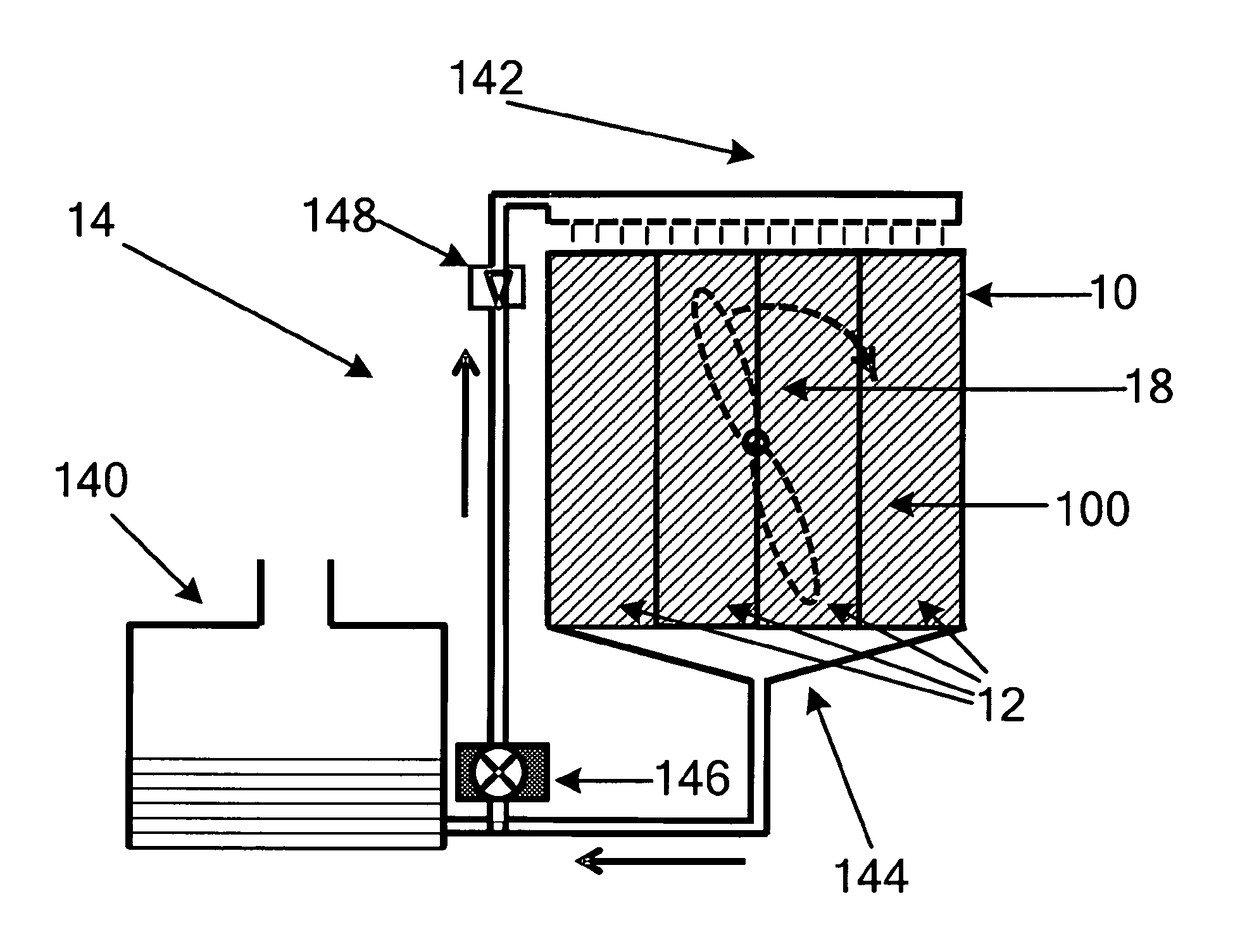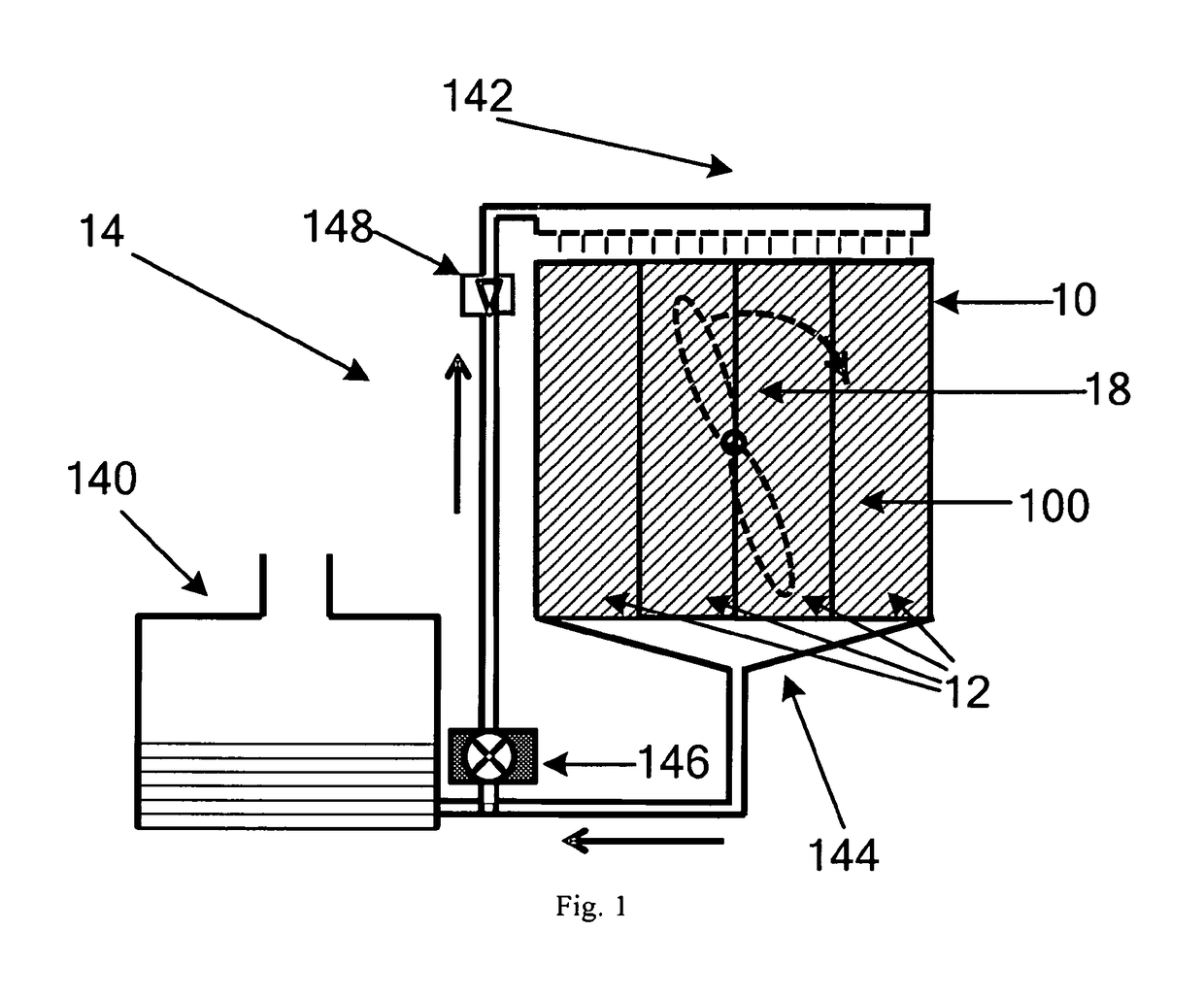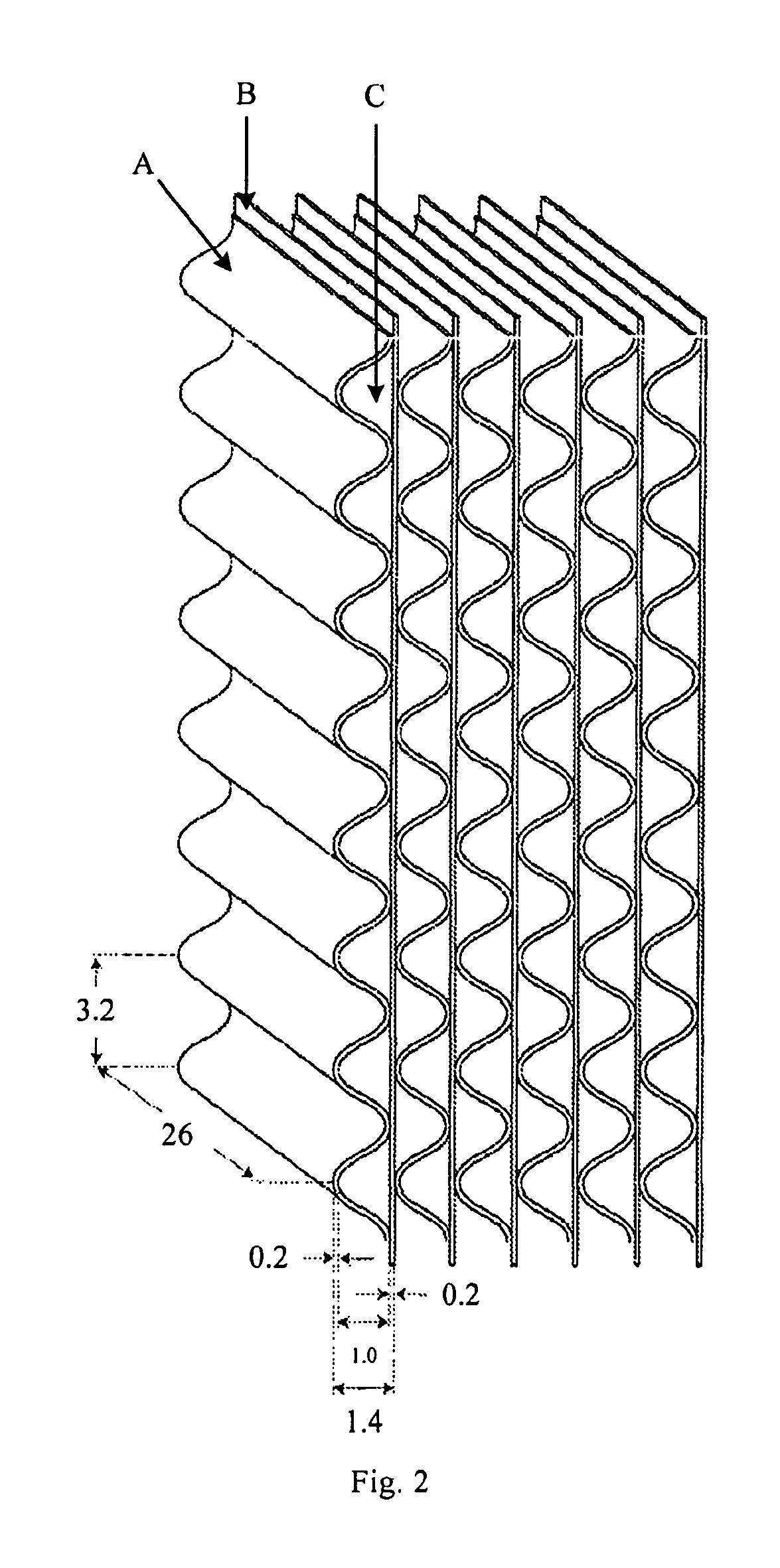Apparatus for gas cleaning
a technology for cleaning apparatus and gas, applied in lighting and heating apparatus, heating types, separation processes, etc., can solve the problems of fine white dust, marked decrease in cleaning efficiency, and substantial zero
- Summary
- Abstract
- Description
- Claims
- Application Information
AI Technical Summary
Benefits of technology
Problems solved by technology
Method used
Image
Examples
embodiment i
[0077]The liquid provided by the unit 14 to the carrier 12 is also the aqueous solution of the reagent that exhibits a physical or chemical reaction with the gaseous target pollutant, while the solvent can be water. When the gas with a low humidity passes through the carrier 12 that is wetted by the reagent solution, the gas becomes humidified through water evaporation from the wetted carrier surfaces. The gaseous pollutant that is soluble in water will at least partly dissolve in the reagent solution comprised in and on the carrier. The dissolved gaseous pollutant can then become strongly bound by the reagent in the solution through a chemical reaction or physical interaction, thereby enabling its removal from the gas.
embodiment ii
[0078]The unit 14 is provided with an inlet of tap water, and is controlled by the controller 16 to dispose water to the carrier 12. The water joins into the previously disposed solution of the reagent. When the gas with low humidity enters the carrier, the gas becomes humidified by the solution. The gaseous pollutant that is soluble in water will at least partly dissolve in the aqueous reagent solution contained in the carrier. The gaseous pollutant becomes thereby removed from the gas by reacting with the reagent in the aqueous reagent solution.
[0079]Besides reacting with the reagent, the pollutant gas is also at least partially dissolved in the solution, which also contributes to the gas cleaning.
[0080]In these embodiments, the apparatus for gas cleaning not only cleans the gas but also humidifies the gas.
[0081]● When the controller 16 determines that the humidity of the gas entering the carrier is above a second humidity threshold, the controller 14 triggers the unit 14 for disp...
PUM
| Property | Measurement | Unit |
|---|---|---|
| humidity | aaaaa | aaaaa |
| humidity | aaaaa | aaaaa |
| humidity | aaaaa | aaaaa |
Abstract
Description
Claims
Application Information
 Login to View More
Login to View More - R&D
- Intellectual Property
- Life Sciences
- Materials
- Tech Scout
- Unparalleled Data Quality
- Higher Quality Content
- 60% Fewer Hallucinations
Browse by: Latest US Patents, China's latest patents, Technical Efficacy Thesaurus, Application Domain, Technology Topic, Popular Technical Reports.
© 2025 PatSnap. All rights reserved.Legal|Privacy policy|Modern Slavery Act Transparency Statement|Sitemap|About US| Contact US: help@patsnap.com



